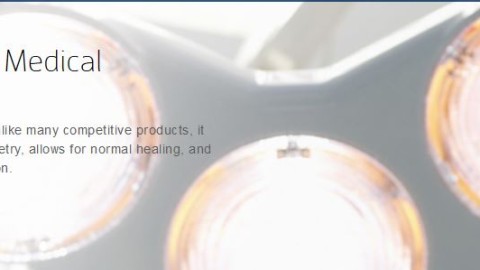Without investment research, financial markets cease to perform their most important societal function: the allocation of scarce resources to their best possible use. Yet, there are many misunderstandings about how it should be created, nurtured, consumed, and remunerated. Convergex’s Nicholas Colas debunks 7 myths about investment research.
Myth #1: Stock research used to be very profitable for the big investment banks but is now a money loser and needs to be restructured or shut down entirely.
The truth: I started in equity research in 1991, and it wasn’t a profit center even in those antediluvian times. Stock research departments have been, and always will be, cost centers. And that’s perfectly fine. Investment research serves multiple purposes at any investment bank, large or small. Analyst coverage gives bankers a calling card when pitching companies for high-margin underwriting or advisory services. It creates a baseload level of demand among money management clients for the trading desk. Trade magazines and general interest publications quote analysts, essentially marketing the entire firm as an expert on a given industry or topic. Yes, small boutique advisory firms can get by without research. But why do you think Evercore bought ISI? Growth is the one and only logical answer.
Is all that worth the money the research department spends on talent? That depends, of course, on the amounts involved. But investment bank-generated stock research is essentially the advertising and marketing arm of the institution. It serves that function well and therefore seems unlikely to change any time soon.
Myth #2: No one pays for written research reports or analyst opinions any more.
The truth: If you walked into any money manager’s office in the pre-Internet days, you would invariably see huge stacks of research reports laying all over the place. Most of them would remain unread until the custodial staff came to cart them away. The analysts that wrote those tomes knew this was the case – they would visit those same money managers often enough to see the cluttered offices and overflowing garbage pails.
Ask any analyst in the mood to tell you the truth, and he or she will tell you that much of what they write isn’t for their clients. It is for themselves. Clear writing is clear thinking, and it is the latter that remains valuable. Now, for analysts that have their juniors do all the heavy lifting, that benefit declines. But for the analysts that do their own work, reports have – and always will have – immense value. This is because good analysts still get paid to visit with and call their clients. And be as smart as possible. Writing those “worthless” reports helps that a lot.
Myth #3: The purpose of investment research is to help clients generate better returns.
The truth: This statement is only correct, in the broadest sense, for retail investors. They have limited access to resources, so for them a “Buy” or “Sell” recommendation is a valuable clarion call to action. Even then, however, a research report with a recommendation that proves incorrect still has value if it makes them consider more information than they would otherwise have. A “Sell” recommendation on a highly risky stock may steer a conservative mom-and-pop account away from a name that drops 20% before rising 40%. Chances are good that they would bail at the bottom in that scenario, locking in losses even if the stock eventually moved higher.
For institutional investors, all research has one function: to feed the firm’s own internal investment process. Whatever that firm can pull out of the market in the way of returns is its responsibility, and executives know it. Investment bank research analysts feed that process with their stock ideas, but that’s only part of the equation. Other parts may include the firm’s own analysts, datasets of fundamental information, technical analysis, interviews with management and industry experts, and views on the sector rather than just one stock.
Myth #4: Brokerage analysts don’t publish “Sell” recommendations because they are afraid of what the company in question may think.
The truth: Just as much pressure on this topic comes from the analyst’s investment clients. I published a “Sell” on a company in the late 1990s and got a somewhat irate call from the CFO. Fine – that’s his job. But I got 22 calls from investment clients with large positions in the stock. Those were harder conversations, because they thought I was essentially calling them stupid. And no one wins when you have that kind of chat, even if you are trying to make the right call.
As a final aside, ask any Wall Street director of research how many “Sell” recommendations his or her department publishes on the last day of a quarter. The answer is very close to none.
Myth #5: Earnings estimates don’t matter.
The truth: The process of creating a useful financial model is the single most underappreciated part of the entire equity investment process. Whatever your point of view on a stock, it has to filter through the financial model to support that narrative. Yes, companies “Beat the street” estimate all the time, but sometimes their stock price unexpectedly (and sharply) drops or climbs more than you’d think appropriate. That’s because something else has gone right or wrong inside the income statement or other piece of the financial report. If you don’t do a financial model, that will seem like the capricious response of a market wracked with ADD. It isn’t. It is simply that the whole financial model matters, and in order to understand that, you need to go through the work of creating that single-point earnings estimate. EPS estimates are the destination, but the journey of creating them is where the magic happens.
Myth #6: Any decent Wall Street analyst should set up his or her own hedge fund or research shop.
The truth: There is a big difference between doing great research and operating a profitable business. Running a hedge fund, for example, requires a solid and repeatable investment process that works across a number of industry sectors. Good risk management is also a must, and having a keen sense of market trends doesn’t hurt either. Then there are the operational sides of hedge fund life – marketing the fund, making sure operations run smoothly, and hiring/retaining talent.
Starting a research boutique has a similar number of challenges. Chief among them, we have found, is hiring the right salespeople to support the product. Good sales talent is the rarest of all assets on Wall Street and, as we often remind startups when they visit us for advice: “Research is not bought. It is sold.”
Myth #7: Institutional clients only pay for access to management now; not analyst reports, visits, recommendations or estimates.
The truth: Pretend for a moment that you are an institutional money management client and I am your sales coverage at a large brokerage firm. I call you and say, “We’re not sending you any more research reports. You won’t be able to call any of our analysts, and I won’t tell you when they change their recommendations. And I expect that you will pay me exactly the same as the last 12 months.” How would you respond? Probably not well. You’d likely be on the phone to the head of equities making sure I never covered you again.
Now, I understand why lots of critics get confused about this point. They think that clients pay for research they’ve already consumed, and processes such as broker voting do resemble that paradigm. The reality is that institutional investors pay for a combination of past service and expected future utility. That is why clients pay for more research than they apparently consume in any period – they are also paying a call option price for future content.
We could go on with the myth-busting, but let’s close out on some points that relate to the real problems equity research faces in the coming years. There’s no shortage of those either.
- You can only be as healthy as your customers, and active management has had a tough slog over the past decade. Assets under management in U.S. listed ETFs now total close to $2 trillion, up from essentially zero 20 years ago. Almost all those assets are passively managed. Mutual funds, by contrast, have seen outflows of a hundred of billions of dollars since the Financial Crisis. Most of those funds are actively managed. Even with a healthy base of hedge funds, typically voracious users of research, active management has had a tough slog for a while. So it should be no surprise that stock research has had a rough time as well.
- There are 40% fewer U.S. public companies now than 20 years, down from about 9,000 in the late 1990s to 4,400 today. That is 40% fewer names that need analysis. And 40% fewer chances to promote stock research.
- The need to be more creative in a field with strict regulatory oversight. Make no mistake – investment research is a vibrant and growing field despite the naysayers. New entrants are doing everything from crowdsourcing earnings estimates to analyzing satellite imagery with computer code instead of visual inspection. There are even fast growing startups in good old-fashioned stock research.
In this area, the investment banks could be doing more. We suspect they do not want to undermine the analyst-centric approach to their business, and that’s understandable. “Our analyst loves your company. … Do your equity/M&A transaction with us” sounds a lot better than “Our dataset loves your company.” Perhaps they also worry about compliance issues after the pain of the late 1990s missteps in the field. Or maybe they just figure they can wait to see what new products and services actually get traction with clients and then just buy them. - Our bottom line from both the earlier “Myths” and these “Truths” is that research as a business is in a much stronger position than more observers might realize. Investment banking research isn’t broken; but that doesn’t make it immune from competition either. And some of the competition is very good, whether it comes from a new computer algorithm or a stock analyst working at a keyboard. Yes, the decline of active management is a challenge, but it’s hardly new. It has already forced many marginal players to the sidelines. It hasn’t stopped new research shops from starting up and, in many cases, growing despite those challenges.
Our final, and most important, message is this: A vibrant and innovative landscape for investment research isn’t just good for money managers or Wall Street. Society relies on the markets to allocate scarce resources – capital and labor – to their best possible use. The sharper the research, the better the process works.










Hmmmm. Research. Was it ever needed?